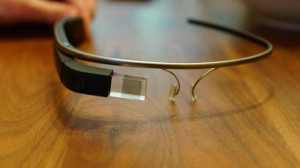The Director knew it was time for a staff meeting.
“All right, everyone. The deadline’s almost here. The President’s promised a smoothly functioning healthcare website by tomorrow. Now, I know everyone’s been  working hard. Visits to non-work-related websites like Facebook and Above the Law dropped by 40% in November. I’m proud of that figure and will make sure that New York Times knows about it. But the fact remains that despite our intense efforts the website is, in a word, still not working. So we’re down to our last option – paper applications.”
working hard. Visits to non-work-related websites like Facebook and Above the Law dropped by 40% in November. I’m proud of that figure and will make sure that New York Times knows about it. But the fact remains that despite our intense efforts the website is, in a word, still not working. So we’re down to our last option – paper applications.”
The following day, when millions of Americans visited the federal government’s healthcare website to see who won the bet, they were confronted with a perfectly functioning, non-glitch riddled single webpage, with no links or forms or fields or even photographs, but one toll-free telephone number.
When the number was called, the caller would be put in touch with someone who took their information and then read back to them the different health policies that were available to the caller and the price. It was clear from the very beginning that the “qualified healthcare agents” that took the calls had been greatly influenced by technology and faced challenges adjusting to world run by humans.
“Thank you for calling healthcare.gov,” the agents would say in their best cheerful machine-voice. “Press 1 if you are calling about individual policies. Press 2 if you are calling about family policies. Press 3 if you have experience building large websites.” When they realized they couldn’t tell which number had been pressed, they would say, “Why don’t you just tell me what you are calling about?”
After a day the telephone lines were hopelessly congested. The Director had to call another meeting.
“Okay,” said the Director at another staff meeting, “the telephones aren’t working out so hot, either. The average wait-time has grown so long that people are complaining about the hold music. And here I thought people liked Lawrence Welk. All right, well, we’ve got to go back to the drawing board. What’s a drawing board? I don’t know. Look it up on Wikipedia.”
The only thing left to do was to have people sign up in person. People were annoyed at having to drive all the way to Washington, D.C. just to shop for medical insurance, but the complaints subsided a bit when the President issued Executive Order 94029 which authorized valet parking.
The wait time to see an agent was still very long. And the long journey made it even longer, since people figured, “Well, if we came all this way and waited all this time, we may as well ask as many stupid questions as possible.”
The wait time to meet with a federal healthcare agent became so long that people were practically living in the lobby. They had to miss appointment, including doctors’ appointments. The government had to arrange for doctors to visit the lobby and examine the people waiting in line. The convenience more than made up for the lack of privacy.
The people in line started liking the lobby doctors so much that they lost their interest in procuring health insurance that would require them to find a new doctor. They started letting others go ahead of them in line, hoping to extend their stay. “Oh, you go on ahead of us,” people would say. “We haven’t decided what we want yet.”
The lobby grew ever more crowded, and eventually some members of Congress introduced a bill to expand the lobby and the number of doctors that serviced it. The bill won bipartisan support, largely on the strength of a rider that increased the Netflix subsidies for senators and their staff. The Affordable Care Act Sign-Up in Person Waiting Lobbies proliferated around the United States, so that whenever people had to see the doctor they would just go to one of these lobbies, get in line, and wait for the doctor to come around with the stethoscope and little rubber hammer.
A cottage industry of lobby-care grew, and almost overnight people started seeing everything from examination tables on wheels to mobile MRI apps for smartphones. Around the time that they started adding operating tables to the lobbies, the website was finally fixed. No bugs, no glitches, no crashes. But no one bothered signing up. The millions of Americans waiting in line already liked the plan they had, and wanted to keep it.



